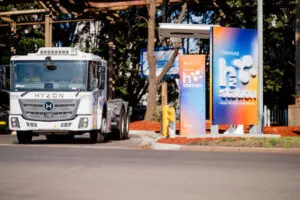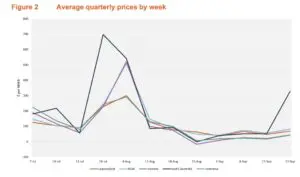The Australian Energy Market Operator has issued a snap warning of potential gas shortfalls on the east coast, after increased demand and troubles at a major Victorian gas processing plant have combined to limit ready supply of the fossil fuel.
In an East Coast Gas System Risk or Threat Notice issued late on Wednesday, AEMO says it has identified a potential risk or threat to the reliability or adequacy of the supply of covered gas to meet demand in New South Wales, the ACT, Victoria, Tasmania and South Australia.
The notice says the “nature and magnitude” of the risk is for peak day shortfalls to occur in certain demand and supply scenarios – a threat AEMO expects could hang around until mid-Spring.
The main cause of the gas shortage has been identified by AEMO as an unplanned outage extension that has constrained production at the Longford Gas Plant in Victoria – the same plant where a deadly explosion took out the state’s gas supply for 10 days back in 1998.
“The Facility Operator of the Longford Gas Plant has reported that offshore maintenance will continue to constrain production capacity to a lower than forecast level through to at least 1 July 2024,” the notice says.
“Constrained Longford production capacity in combination with high winter seasonal demand and the potential for continued high gas generation demand will result in continued high withdrawals from the storage facilities located in the southern jurisdictions and reduce the storage inventory in these facilities.”
“Reduced storage facility delivery capacity may pose a risk to gas supply adequacy in southern jurisdictions on peak demand days during the winter peak demand period (through to 30 September 2024),” the notice says.
The shortages in supply have coincided with increases in demand, as Australia’s east coast states experience an unusually cold start to winter, including record low June temperatures in Victoria and New South Wales.
Meanwhile, in Tasmania, an extended dry period has forced the majority hydro powered state to fire up its biggest gas fired power generator for the first time in five years.
As Renew Economy reports, some energy market observers have suggested that the Tassie gas plant was brought back on line because of weak wind conditions. But Vedran Kovac, Hydro Tasmania’s head of commercial says that is not the case.
“The extended dry conditions have been the primary consideration behind the decision the start the CCGT,” he told Renew Economy on Thursday.
Likewise, renewables supply does not rate a mention in AEMO’s explanation of the risk of gas shortages, despite shorter days and a couple of wind energy “droughts” leading into winter having the effect of pushing the combined output of renewables below its level of last year.
Nevertheless, the gas industry and its supporters are bound to jump on the AEMO warning this week as a sign of things to come under renewables and as justification for further gas exploration and development in Victoria and New South Wales.
Others may see it as further motivation for states like Victoria to electrify its homes and businesses, thus ensuring domestic gas supplies can be reserved for large-scale generation, only, as the grid shifts to firmed renewables.










